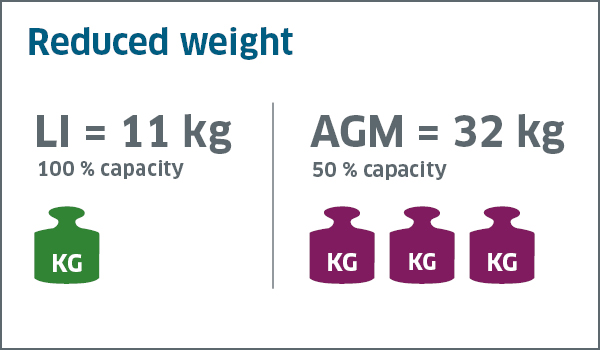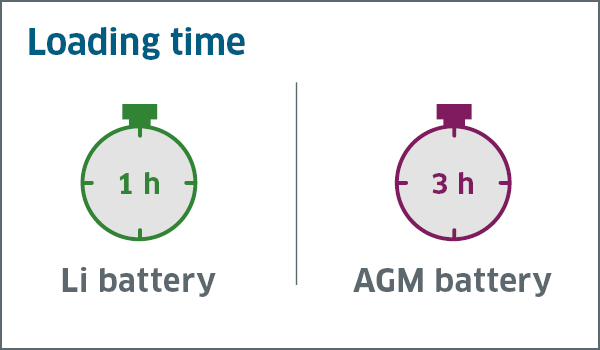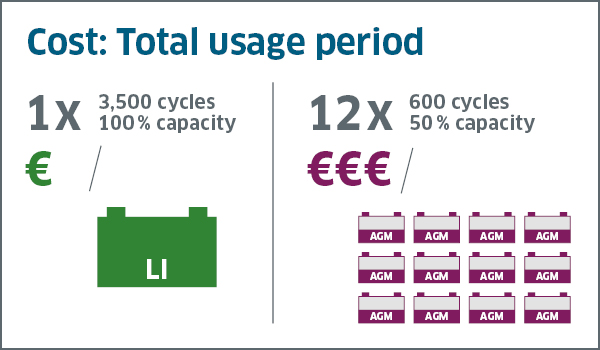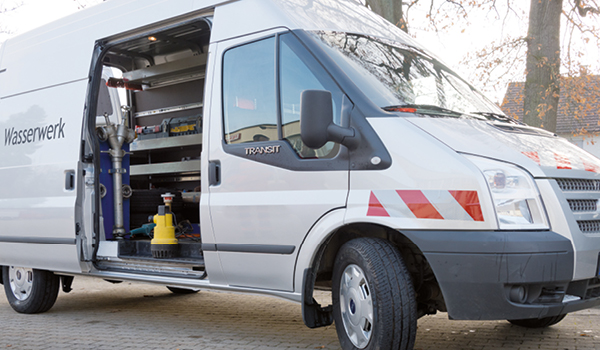

Lithium batteries are much lighter than lead batteries and have a significantly longer service life and number of charging cycles. In addition, lithium batteries impress with a significantly smaller volume, better charging efficiency, high energy density, low self-discharge and, last but not least, a significantly larger depth of discharge (lithium approx. 90 - 100 %, lead only approx. 50 %).
FAQ | Useful informations
 |
Staudte Hirsch Battery Charger SH-3.120, 6 V/12 V, 1 A Item no. 331200 To the product > |
 |
Staudte Hirsch Battery Charger SH-3.170, 6 V/12 V, 2 A Item no. 331700 To the product > |
 |
Staudte Hirsch Battery Charger SH-3.130, 6 V/12 V, 4.5 A Item no. 331300 To the product > |
 |
Staudte Hirsch Battery Charger SH-3.150, 6 V/12 V, 10 A Item no. 331500 To the product > |
 |
Staudte Hirsch Battery Charger SH-3.160, 12 V, 16 A Item no. 331600 To the product > |
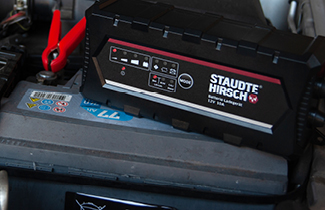

Batteries can only be charged gently and fully with a suitable charger. Always compare the technical data of the charger with that of the battery.
In order to utilise the full capacity of your battery, a full charge is a basic requirement.
Deep discharge occurs when more than 60 % of the battery capacity has been used up. Use loads that have deep discharge protection.
This prolongs the service life and prevents harmful deep discharging. The so-called "memory effect" does not occur with lead batteries.
If discharged batteries are not recharged for a longer period of time, there is a risk that the natural self-discharge will lead to a damaging deep discharge.
Charging a battery while the load is switched on can lead to excessive heating of the charger or battery.
By using chargers with float charging, you ensure that a loss of capacity due to self-discharge is compensated and that your storage battery can be optimally utilised even after a long period of inactivity.

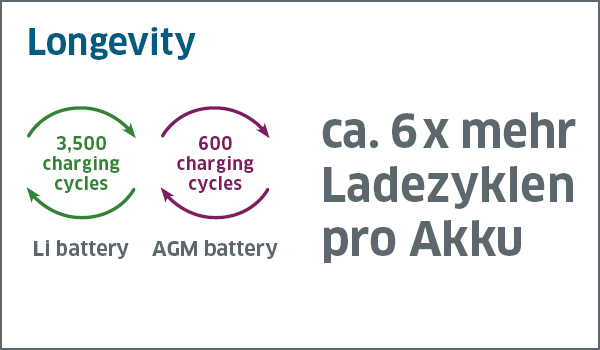
The service life of LiFePO4 batteries is approximately 3500 charging cycles. AGM batteries, on the other hand, have a significantly shorter service life of approx. 600 charging cycles.
